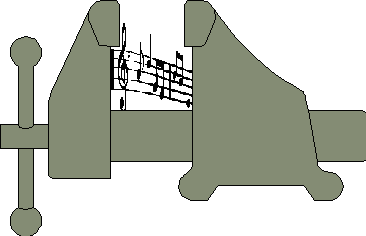TC03 - Sound editing [1 ROSSZ LINK]
Audio editing
Compression methods
 Learning objectives
Learning objectives
When you have completed this session, you should be able to
- differentiate between compression methods.
Compression methods

ADPCM (adaptive differential impulse coding modulation)
The quintessence of this method is that it is not storing the actual value but the difference between the samples taken subsequently. This method works with only 4 bit samples rendering a scale for it and this way it is able to reproduce the wave bends relatively precisely.
A-Law and u-Law
Standard speech compressing algorithms. Apart from PCM amplitude quantization levels are not defined linearly but in a logarithmic way. A-Law is used in Europe; u-Law is used in America and Japan.
VOC
A method developed by Creative Labs. It uses ADPCM compression but removes silent periods like spaces between words and sentences.
MPEG-1 Audio Layer
Originally it was a part of MPEG video compression method. The standard contains three procedures Layer 1, Layer 2, and Layer 3. (Abbreviated as MP1, MP2 and MP3.) From Layer 1 to Layer 3 simultaneously with the efficiency the complexity is also improved. The three procedures are compatible downward with one another.
In case of 128 kbit/s transmission speed MP3 compression hardly any difference can be heard compared to the original, non-compressed signal. (This means a 111 ratio compression.)
MPEG compression has become widely used due to its very high efficiency and excellent quality. MPEG-1 Audio Layer 3 standard was developed for saving music; MPEG-1 Audio Layer 1 was developed for DCC (Digital Compact Cassette). Digital radio (DAB, Digital Audio Broadcasting) uses MPEG-1 Audio Layer 2 standard.
AC3
A multi-channel sound compression method developed by Sonic Foundry. Supports Dolby Digital 5.1 standard therefore it is an ideal sound compression method for home video systems.